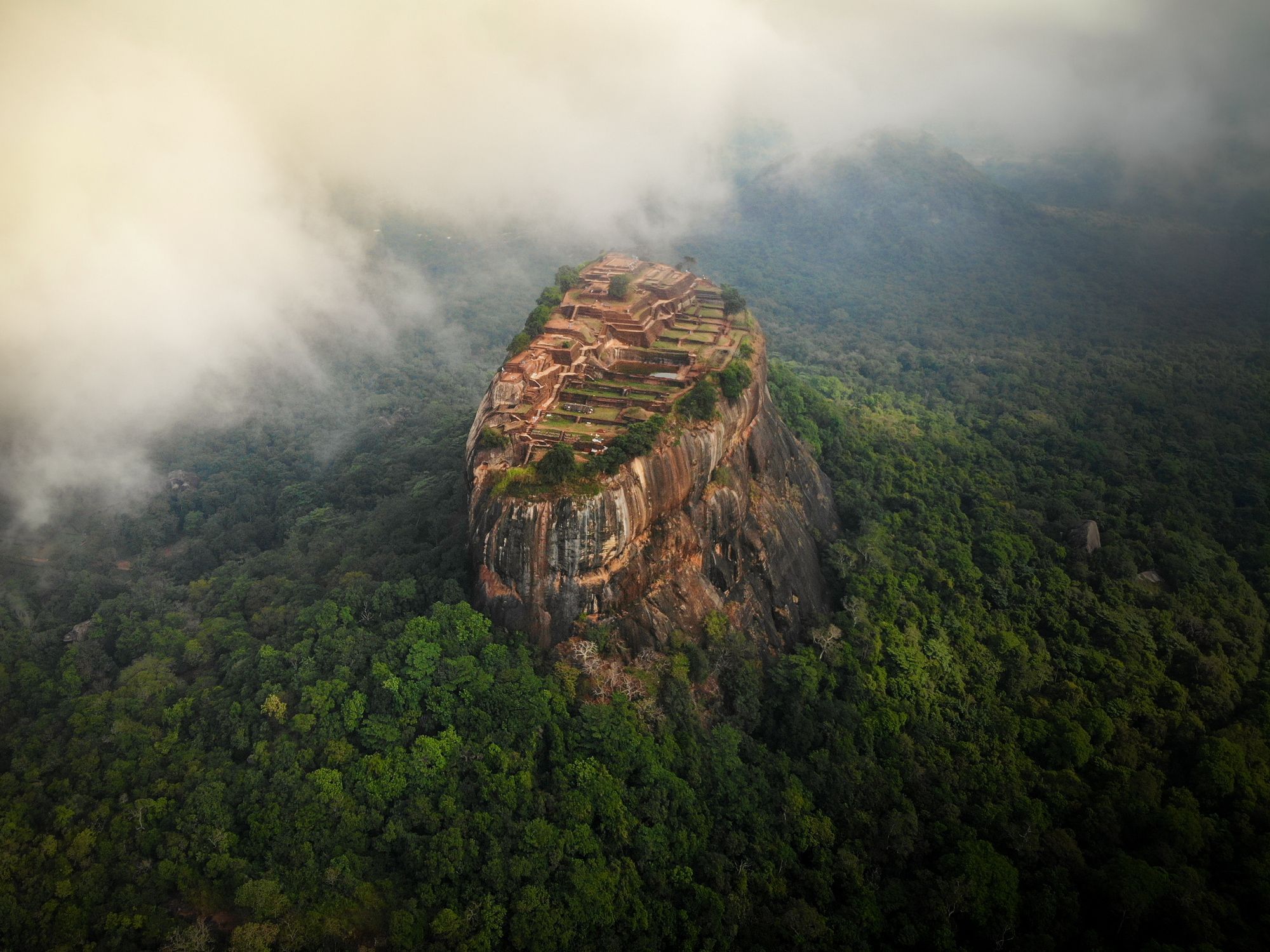Sigiriya is a fifth century fortress in Sri Lanka which has been carved out of an inselberg, a hill of hard volcanic rock. It towers around 600 feet (182.8m) from the forest and gardens below, and has a flat top. This is where the palace of King Kasyapa once stood, reachable up a winding stone staircase. Today, you can climb the 1270 steps to see the well preserved ruins of Sigiriya, a UNESCO heritage site known as the eighth wonder of the world.
Set off early, before the sun gets too hot and the crowds arrive. At the base of the rock, you’ll pass through a series of beautifully manicured gardens. There are the water gardens, complete with fountains and ponds where people used to bathe. Then there are the boulder gardens, named for the large rocks scattered across the sun-dappled grass - they were once the foundations of an ancient monastery, built around the third century BC. But despite the beauty of the gardens, your eyes will be perpetually drawn back to the looming silhouette of Sigiriya itself.
Close to the top of the fortress, you’ll come across Lion’s Gate; a staircase with two huge stone lion paws on either side. There was once a lion’s face hewn into the rock as well, but it’s been eroded by the elements. This is how Sigiriya - which translates as ‘lion rock’ - got its name. Continue walking, and soon you’ll be at the top. This is where the palace once stood; you can still see the terraced palace gardens, and ancient walls and fortifications. The view over the surrounding jungle is incredible.
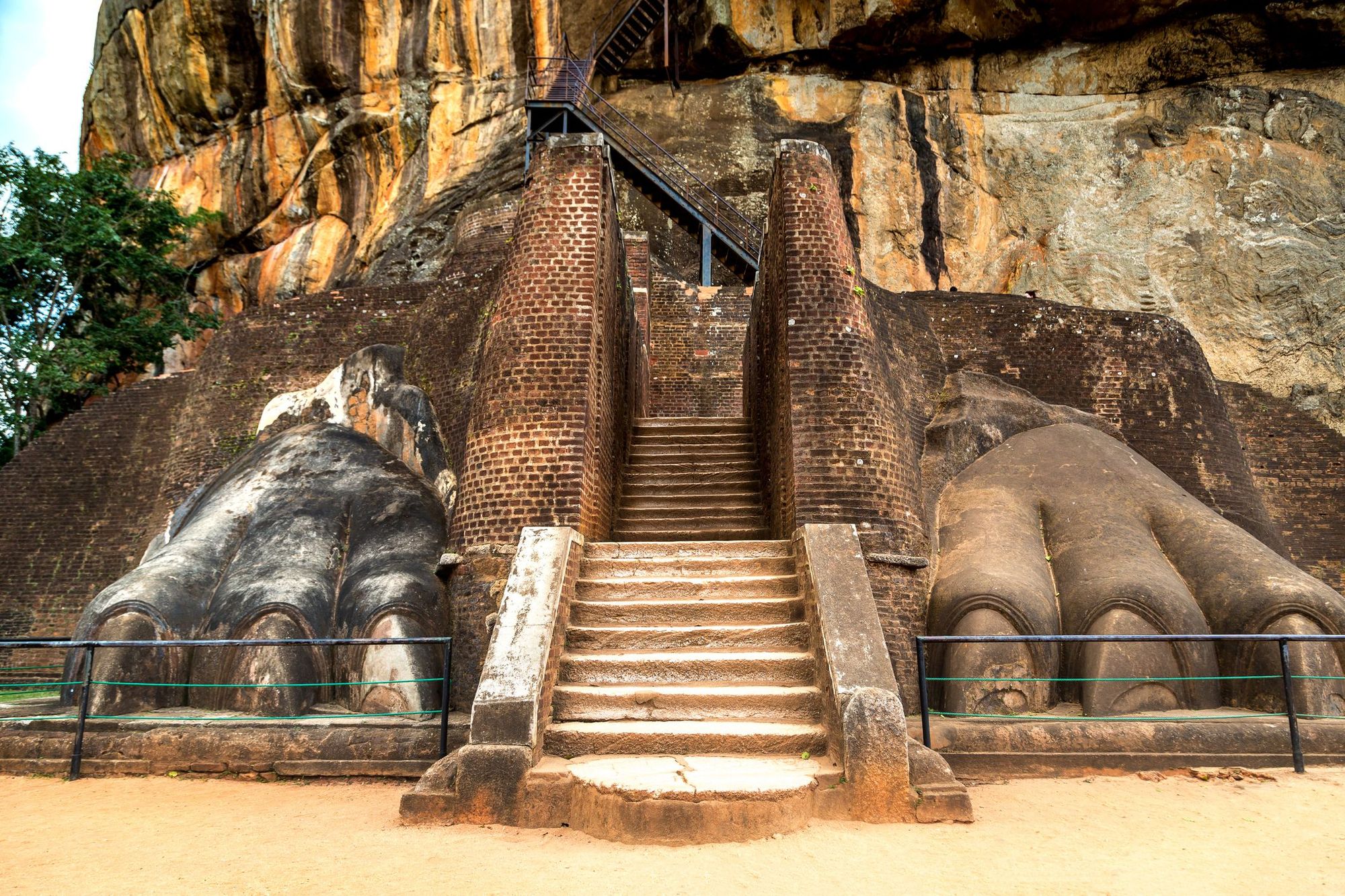
Even today, the scale and intricacy of these ruins are magnificent. But who built this fortress on top of a rock, surrounded by humid jungle, and why? To find out the answer, you’ll need to go back all the way to the fourth century…
Ancient Myths and Melodrama
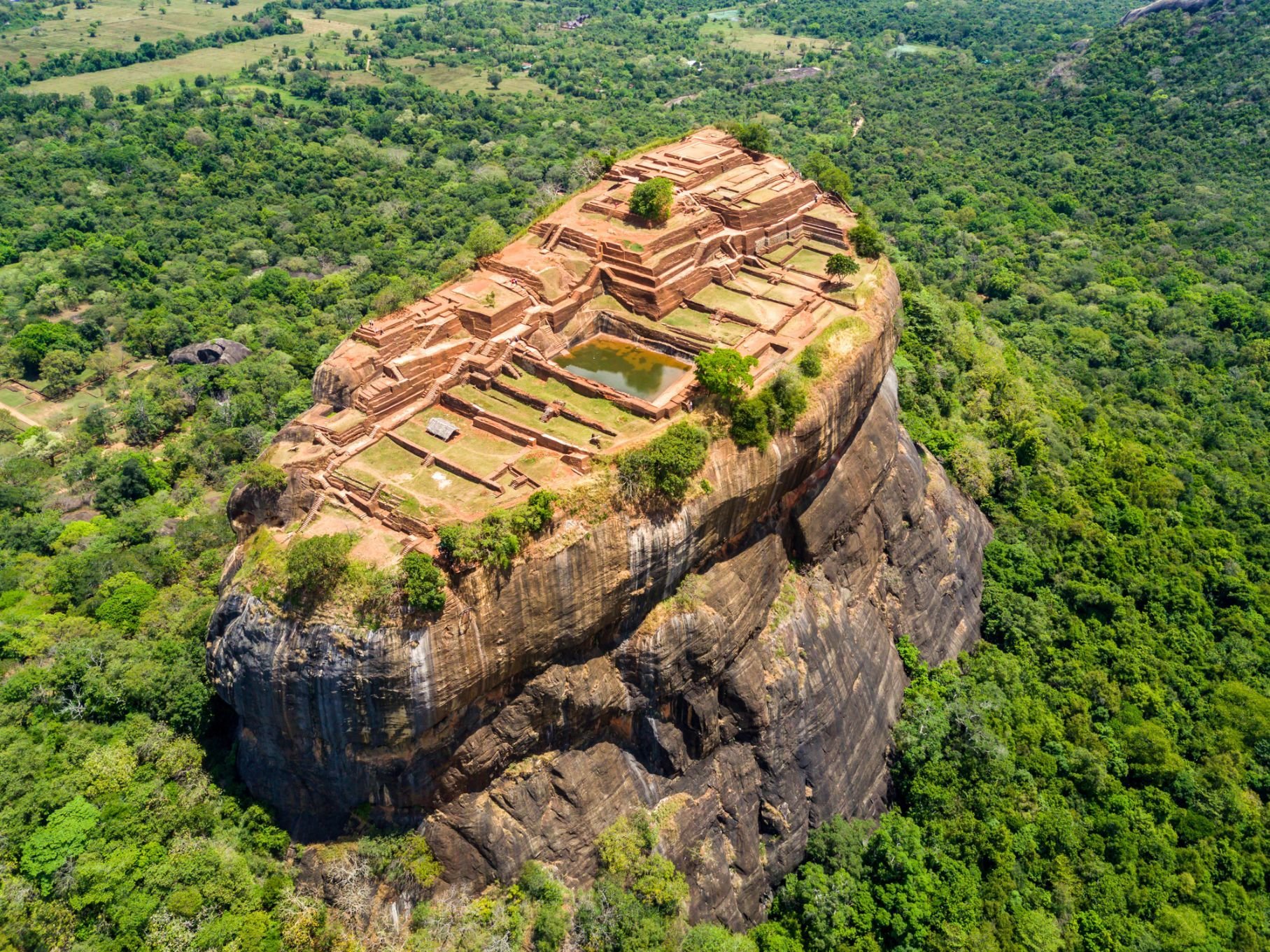
The story of Sigiriya is a little like a Shakespearean drama, The Lion King and a horror story all rolled into one. According to the Mahāvaṃsa chronicle, it begins with King Dhatusena, who ruled Sri Lanka from 455 to 473AD in the capital of Anuradhapura. His first son, Kasyapa, was born to a woman from a non-ruling caste. His second son, Moggallana, was born to a royal wife and considered the rightful heir. He also had a daughter, whom he married to his nephew, Migara.
The story of Sigiriya is a little like a Shakespearean drama, The Lion King, and a horror story all rolled into one
Migara is said to have flogged his new wife with a whip. In retaliation, Dhatusena had Migara’s mother burned alive. Fuelled by rage, Migara poisoned Kashyapa’s mind into believing he should be the real king, and that his father had hidden a hoard of royal treasure. But when Kasyapa begged Dhatusena to reveal his treasure, the king merely led his son to one of his water tanks.
“Repairing to the tank, diving into and bathing delightfully in it, and drinking also of its water, he thus addressed the royal attendants: ‘my friends, these alone are the riches I possess',” the Mahāvaṃsa says.
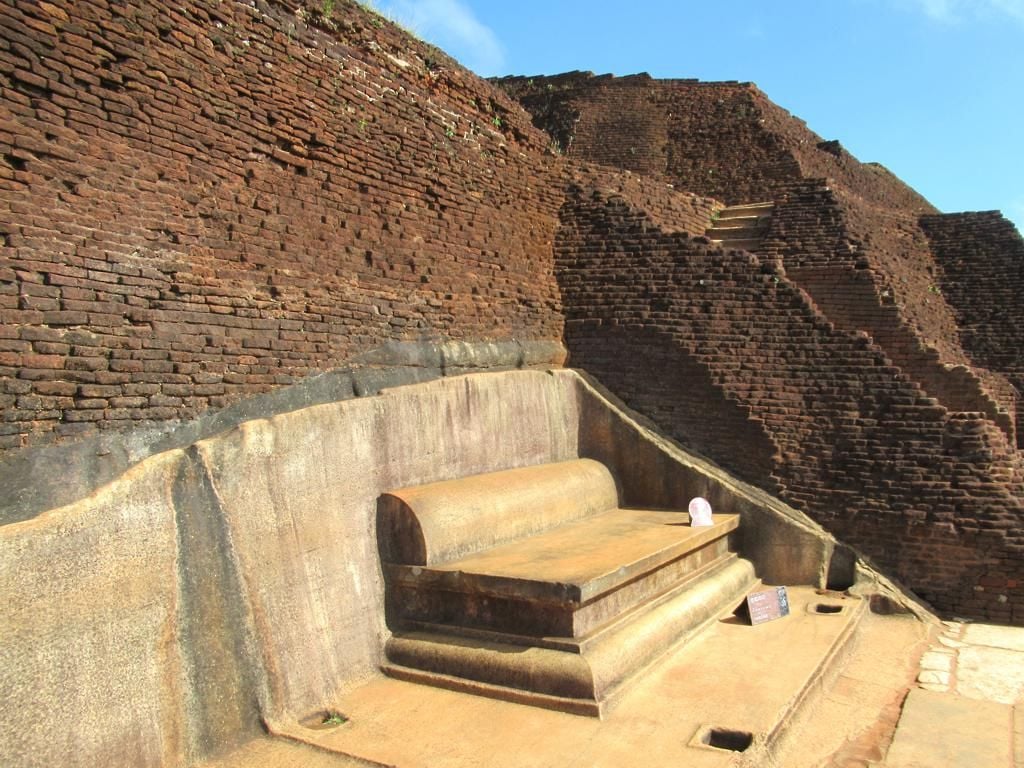
Dhatusena had been responsible for creating an advanced irrigation system in the city, which is perhaps why he gave this answer. But Kasyapa wasn’t buying it. According to the Mahāvaṃsa, he ordered the king put to death, by having him embedded in a wall and plastering it over with clay. After this, Kasyapa took the throne, while Moggallana fled to South India.
But here’s the thing - patricide is a crime, and it was a particularly heinous one back in the day. Kasyapa became very unpopular. Fearing his subjects, and the return of his half-brother, Kasyapa decided to establish a new, safer capital for himself. Which is why he came to Sigiriya in 477CE.
Pride (Rock) Comes Before a Fall
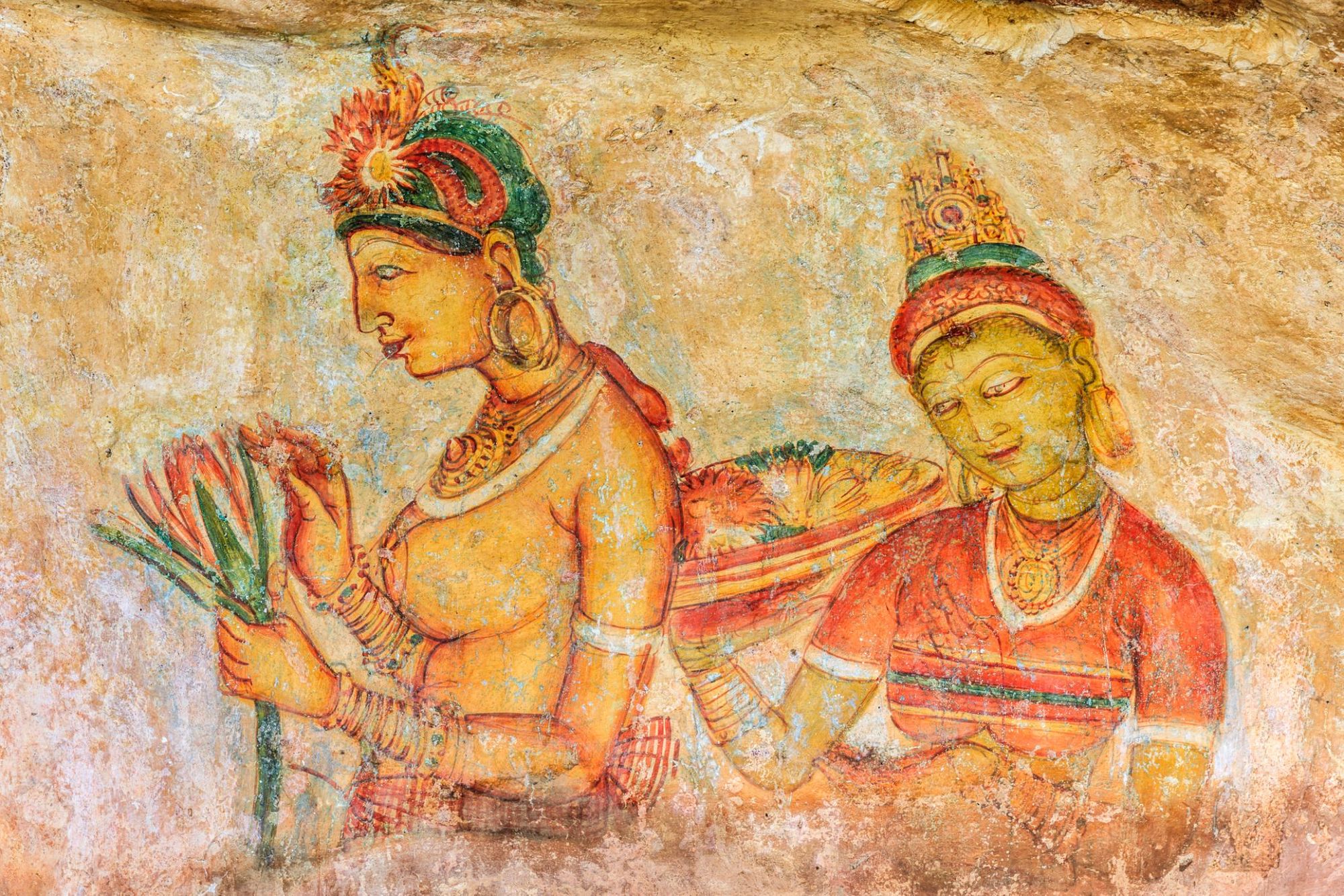
At the time, Sigiriya consisted of several monasteries at the base of the rock. Kasyapa (or rather, his craftsmen) carved steps into the rock, and built an ornate, seven-storey palace on its flat top. The inselberg was painted white, and a strip of frescos featuring beautiful women would have encircled it (an area of around 5,600 sq metres). It’s speculated that they could be members of Kasyapa’s harem, which consisted of 500 women. Today, only a few colourful fragments of them remain, and the white plaster coating the rock has worn away.
You’ll find the stairs to the palace at the top of the terraced gardens, between two large boulders. These stairs wind up the inselberg, passing through narrow rocky archways and leading out onto small mezzanines and terraces - it's hard to imagine the scale and effort that must have gone into the construction. Monkeys perch on the boulders and trees, watching you struggle upwards.
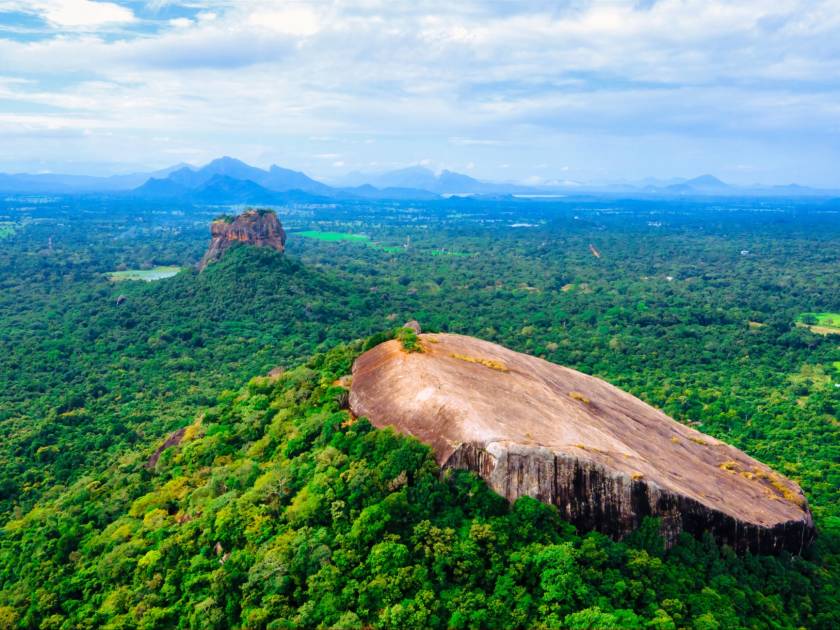
Eventually, you’ll reach the base of the rock fortress, which can be entered by climbing a contemporary metal spiral staircase, and emerge at Lion Gate. One of the most famous parts of the fortress is the Mirror Wall, the brick wall lined the entire staircase. Back in the day it was plastered, and this plaster would have been buffed to a mirror-like shine using beeswax. Now you'll be looking at smooth rock, etched with messages from travellers through the ages.
But most remarkable of all were the intricate water systems, consisting of reservoirs and underground terracotta pipes which fed the streams, fountains and pools in the gardens at the base of the rock. There were even rainwater catchment pools in the sky palace, which filled up during monsoon season.Visitors today might not be able to bathe in the pools, but you can still enjoy the shady peacefulness of the gardens, and their manicured beauty.
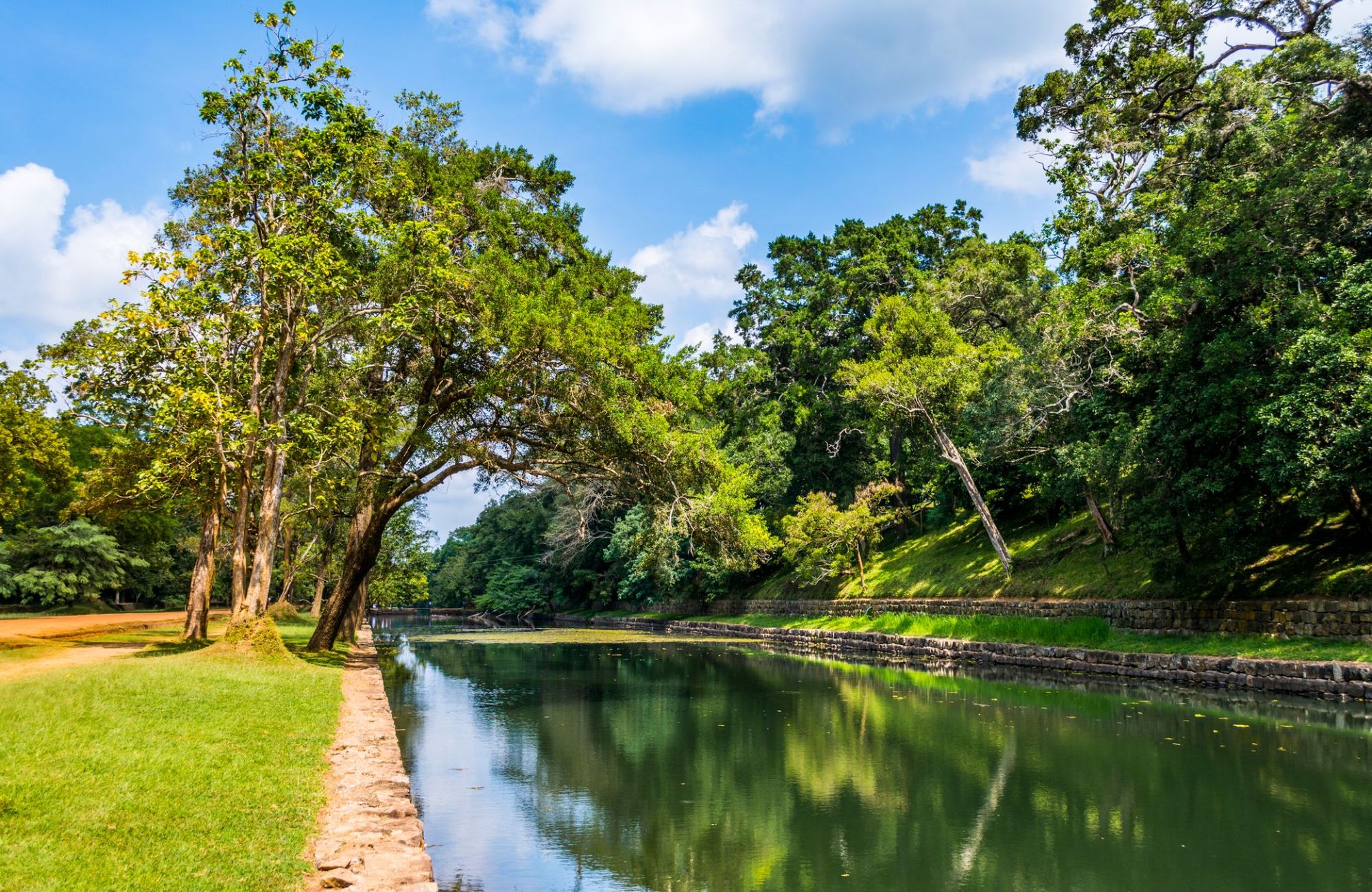
Kasyapa also used water defensively. He built two large moats around the base of the fortress, the outer one of which was apparently filled with crocodiles and was 52 metres (171ft) wide and 4m (13ft) deep. Only traces of the outer moat still remain - with no crocodiles in sight. But today's visitors will cross over the much better preserved inner moat, which is 23 metres (75ft) wide.
But despite his aquatic ingenuity, Kasyapa couldn’t prevent the eventual return of his half-brother Moggallana - with an army - ready to claim his birthright. Moggallana’s army managed to make their way almost up to Sigiriya without being noticed. Kasyapa’s army met them on the nearby plains to do battle.
In those days, kings rode elephants into war. The legend goes that, encountering an area of boggy ground, Kasyapa had to turn his elephant around to find an alternative route. His army misread this as a retreat, and deserted him. Filled with shame, Kasyapa slit his own throat, enabling Moggallana to take the throne.

Moggallana returned the capital to its original location in Anuradhapura. Lacking the proclivities of his brother, he converted Sigiriya to a Buddhist monastery. It’s believed that the monastery fell on hard times after a century or so, and supplemented its income by welcoming visitors. This is confirmed by graffiti etched into the Mirror Wall dating between around 600AD to 1400AD by tourists, which you can still see today.
Written in Sinhalese, Tamil and Sanskrit, the graffiti includes everything from expressions of awe at the site - particularly the beautiful women in the frescoes - to lines of elaborate poetry, and offers a valuable insight into Sigiriya’s story.
Visiting Today: What to Do in Sigiriya
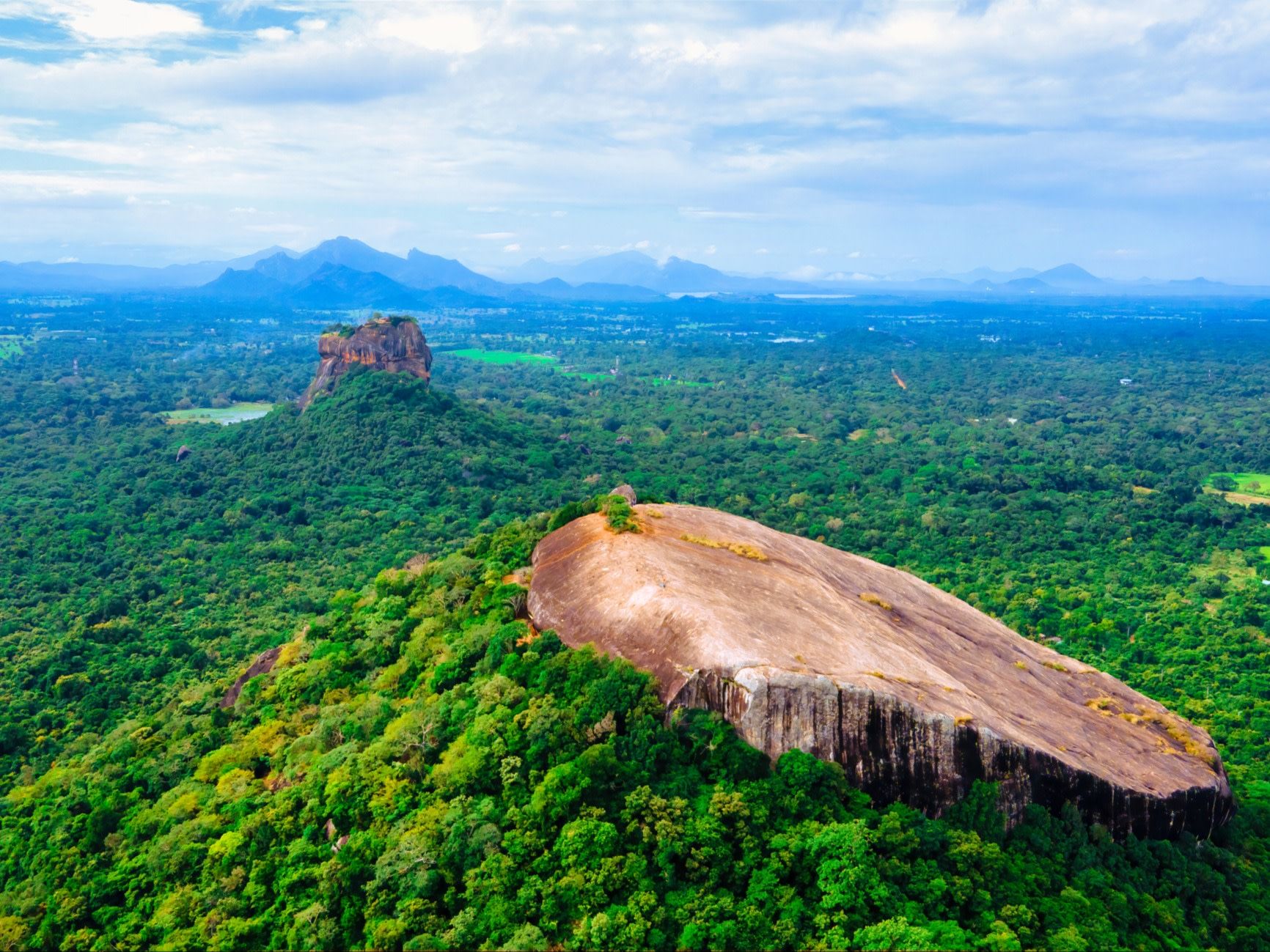
Sigiriya was ultimately abandoned, but not forgotten, as it was written into royal legend. It was rediscovered by army officer Jonathan Forbes. He describes his first visit in his memoir, Eleven Years in Ceylon.
“Having surmounted these ramparts, we arrived at the foot of the bare and beetling crag; and perceived, at a considerable distance overhead, a gallery clinging to the rock, and connecting two elevated terraces at opposite ends, and about half the height of the main column of rock,” he writes.
The site was cleared and restored, becoming a popular tourist attraction due to its historical significance. In 1982 it was designated a UNESCO heritage site. Today, its appeal still remains strong, and it attracts visitors from all over the world.

For the ultimate Sigiriya adventure, we recommend waking up early and cycling down quiet, palm-fringed back roads to the fortress. Admire the ornate gardens, and then ascend the many stone steps to the top of the rock, to marvel over the well preserved ruins of the palace in the sky.
We recommend an afternoon climb up Pidurangala Rock, which lies around a kilometre north of Sigiriya. Stop on the way up the steep steps to see an ancient Buddhist temple, but make sure you reach the top in time for sunset. That way you’ll have an excellent view of Sigiriya and the surrounding jungle bathed in the pink-hued light of the setting sun.
Feeling inspired? Explore the ancient fortress of Sigiriya with us on The Ultimate Adventure Through Sri Lanka.


